Contents
Hydrogen Refueling Network
On the other hand most stellar systems offer virtually limitless resources of hydrogen already in orbit: the water ice in many asteroids, comets, moonlets and planetary rings. The latter source is by far the most convenient: the inner rings are generally only a few meters thick, made of small particles that are easy to process, and most of all on orbits that are generally very well located with respect to both interstellar and in-system jump points.
This explains why most refueling stations along the shipping lanes linking major civilization hubs are located in the rings orbiting ice giants.
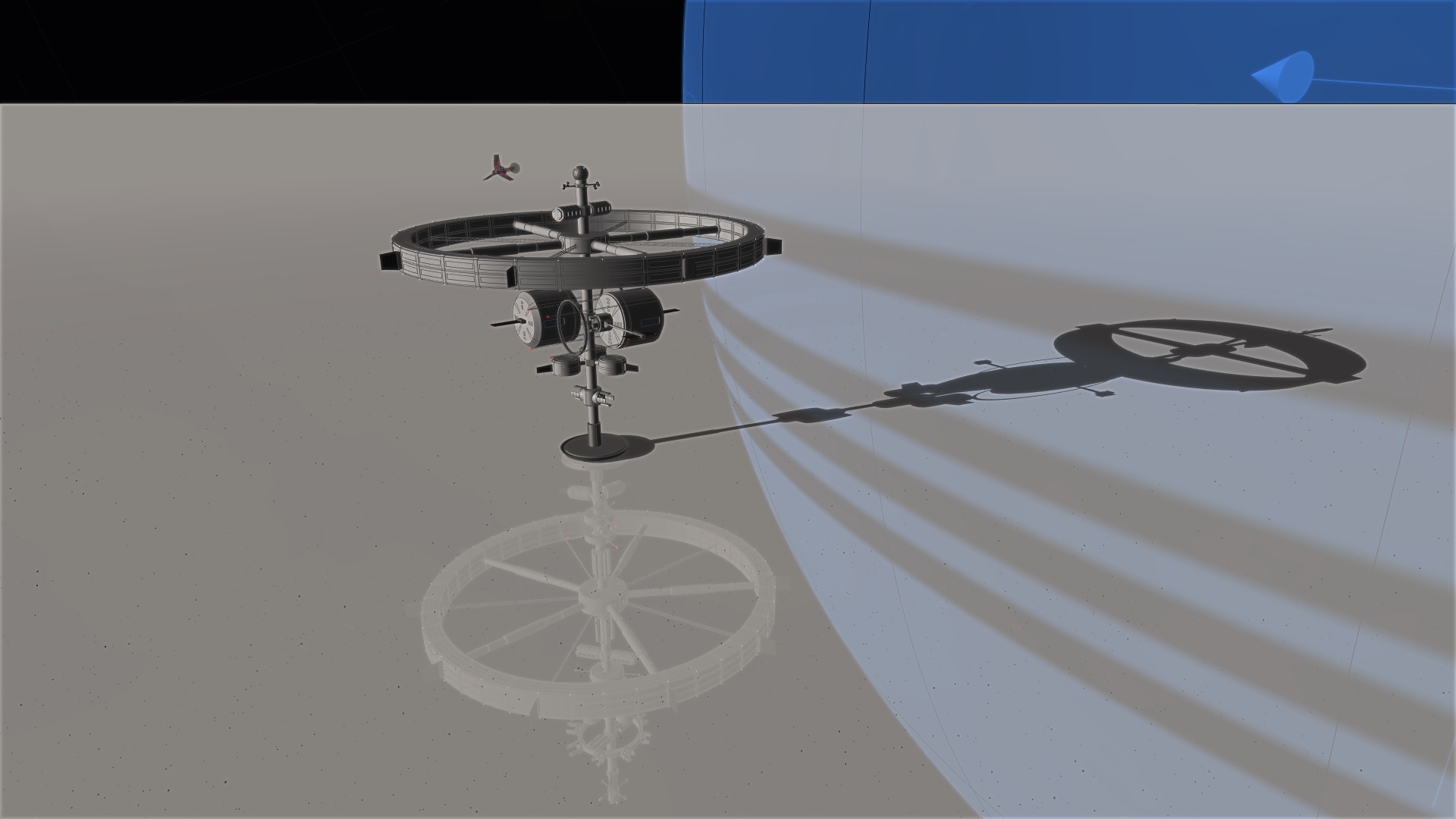
In practice these stations extend on both sides of their host ring. Besides their intrinsically balanced design they feature ballast systems to dynamically maintain their center of mass by their ring scoop. Since they only orbit planets with long-stabilized rings, a limited armored deflector is sufficient to protect the station’s internals from residual higher energy particles.
After extraction the water ice undergoes an electrolytic process to obtain primarily hydrogen and oxygen. Hydrogen is then liquefied and stored in cryogenic tanks.
Besides water the rings very often contain significant traces of other substances that constitute the raw materials for on-board processing plants. The largest stations are built from the richest locations and include shipyards fitted with advanced in-orbit manufacturing facilities.
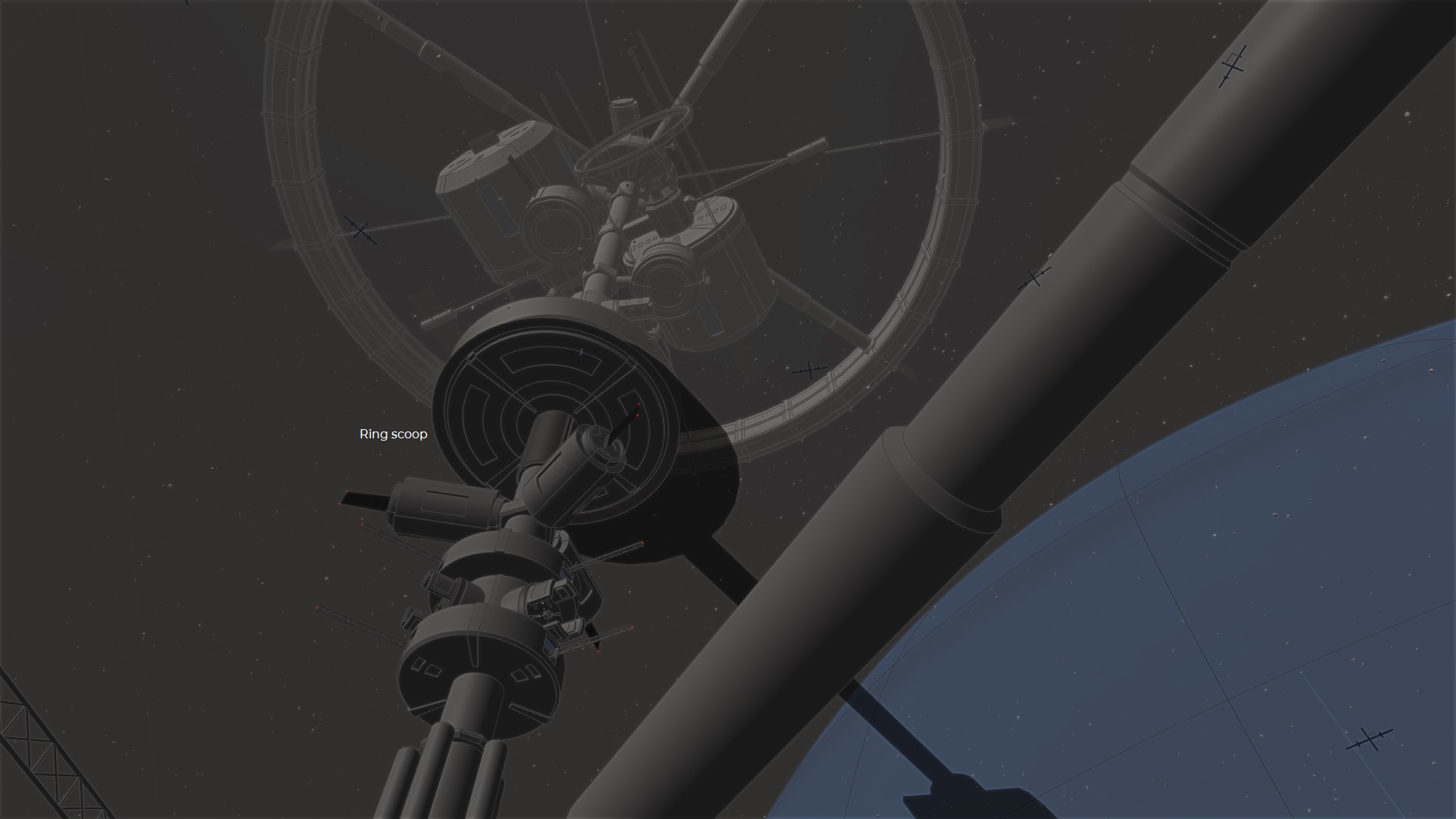
Space Elevators
While fusion engines excel in deep space they struggle to provide the necessary thrust to weight ratio for ground to orbit ascents, especially in the dense atmospheres of inhabited terrestrial planets. Moreover the associated safety issues have yet to be completely solved. As a result the need for more convenient transportation methods has been a key issue since the very beginning of the interstellar age and has led to the development of large scale space structures.

The first of these systems is the space elevator. A cable and counterweight are built so that their global center of gravity (taking centrifugal forces into account) lies on a stationary orbit with respect to the planet’s surface. When the cable is long enough to reach and be anchored to the ground then loads can be lifted to orbit along its length. In practice a space station is connected to the structure at the stationary orbit altitude to serve as a transportation hub.
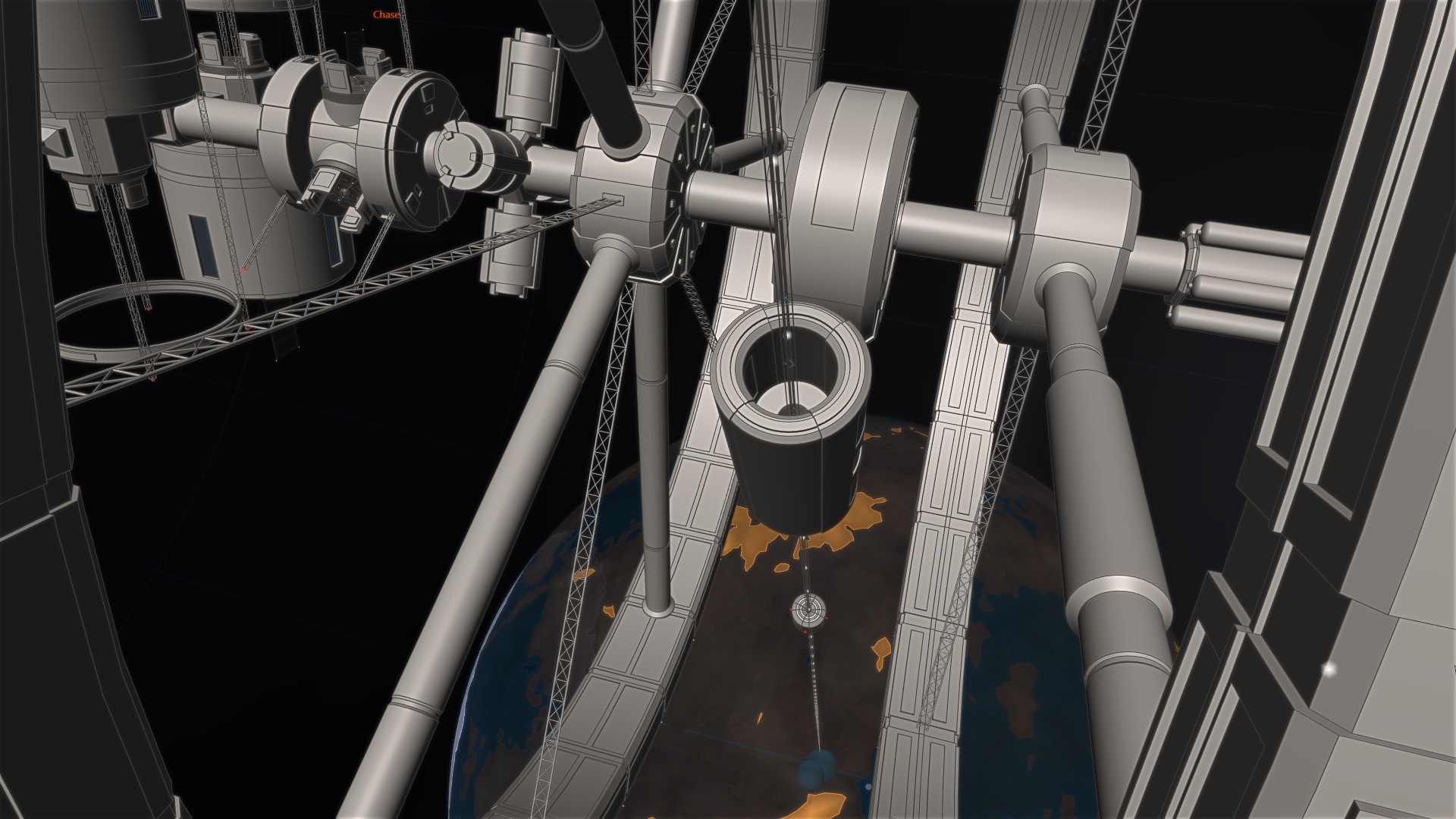
The cable is made of high-performance low-density high-tensile-strength carbon-based metamaterials to be able to withstand both its own and the traveling payload’s weights with the required safety margins. (Incidentally these are the very same materials used in spaceship engineering). Integrated magnetic tracks allow the “climber” (lift) to self propel and glide along the structure without any drag and at very high velocities. At favorable planets with short rotation periods and stationary altitudes < 20,000 km a transit time of 6 hours is typical.
Orbital Rings
Orbital rings are advanced rocketless planet-to-orbit transportation systems. They are usually deployed around planets and moons with the most powerful economies.
An equatorial ring made of two sets of magnetic tracks orbits the planet above the atmosphere, with a little excess velocity to set it under tension for stability. The structure can be reached from the ground thanks to space elevators climbing to hanging stationary skyhooks. Superconducting magnets ensure a frictionless connection to the tracks.


The ring’s trajectory is not perfectly circular and exhibits a small deviation angle at the skyhooks’ locations. The resulting rate of change of momentum produces a lift force that compensates for the skyhook’s and elevator combined weight.
To provide additional control over the whole system’s dynamics the hanging weight can be distributed in real time over 3 points using lateral arms fitted with powerful actuators. The connections to the ring are generally placed a few kilometers apart. They are also active drivers and thus can exchange momentum with it.
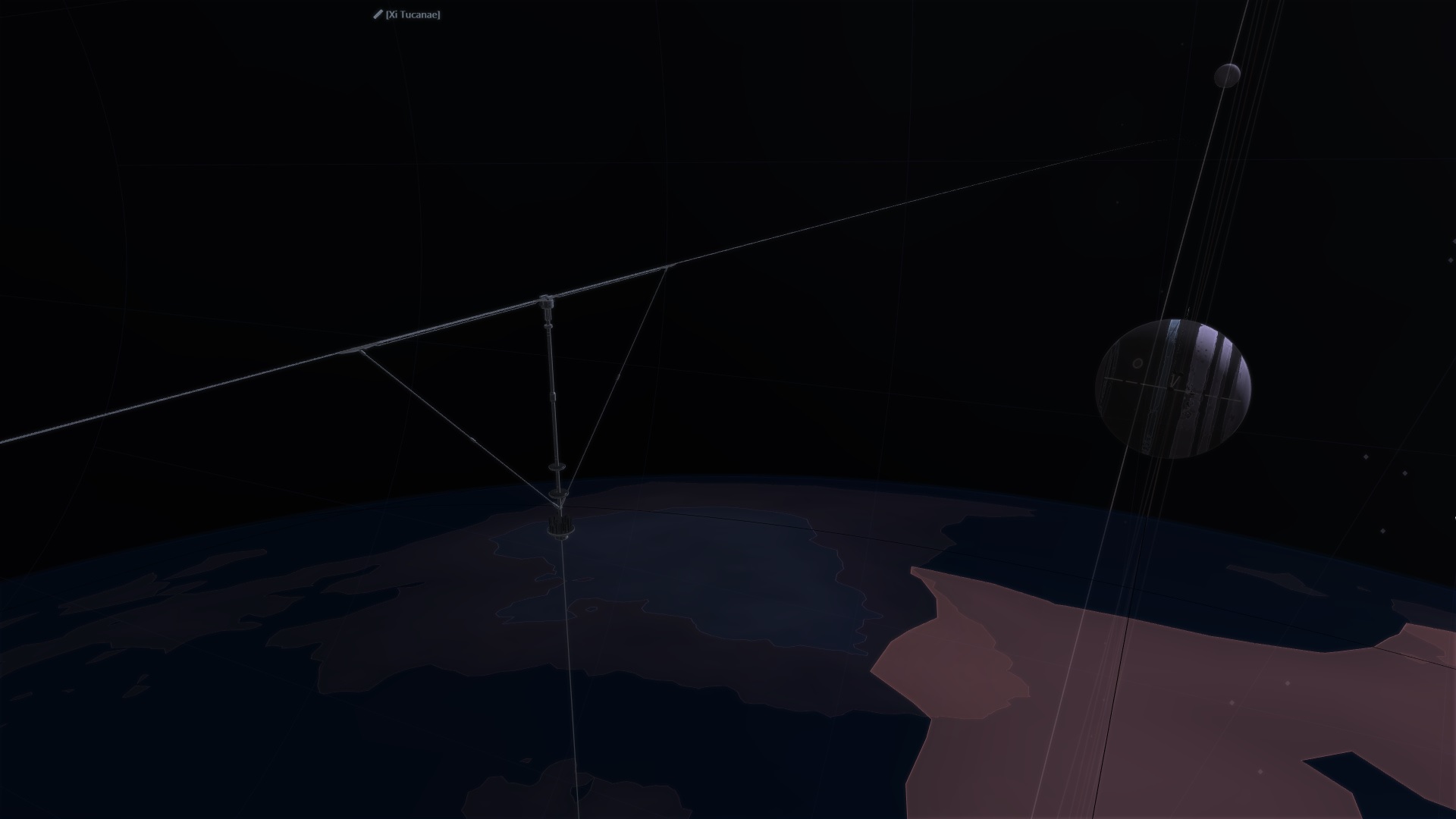
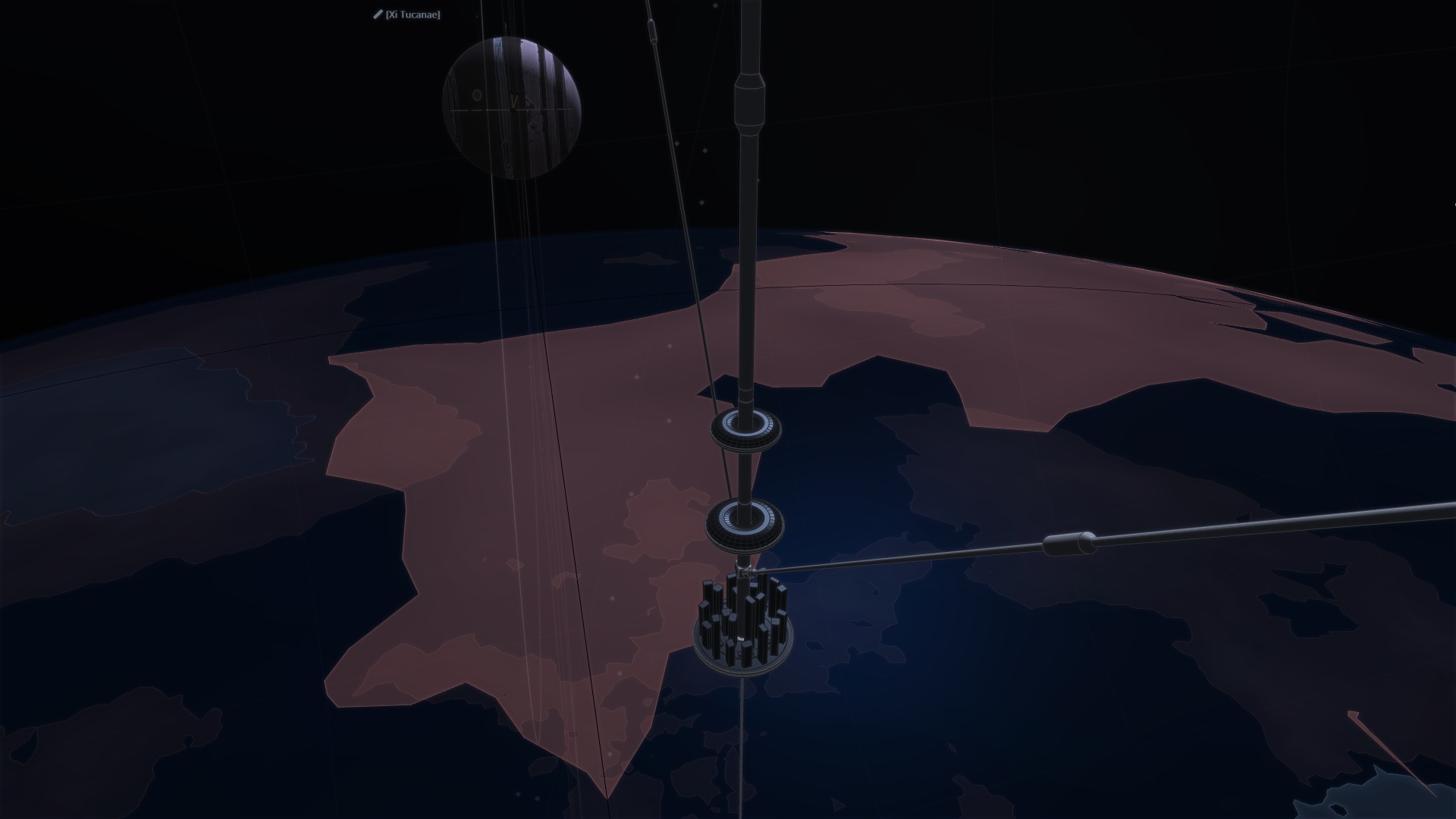
Besides their role as transportation hubs skyhooks are also famous for their fabulous hanging cities and gardens. A residence or headquaters in a skycity are an absolute must for the most prominent companies and individuals. Although this initially generated some political tensions, the associated touristic activities and real-estate market are now considered helpful contributions to fund and maintain the host ring facilities.

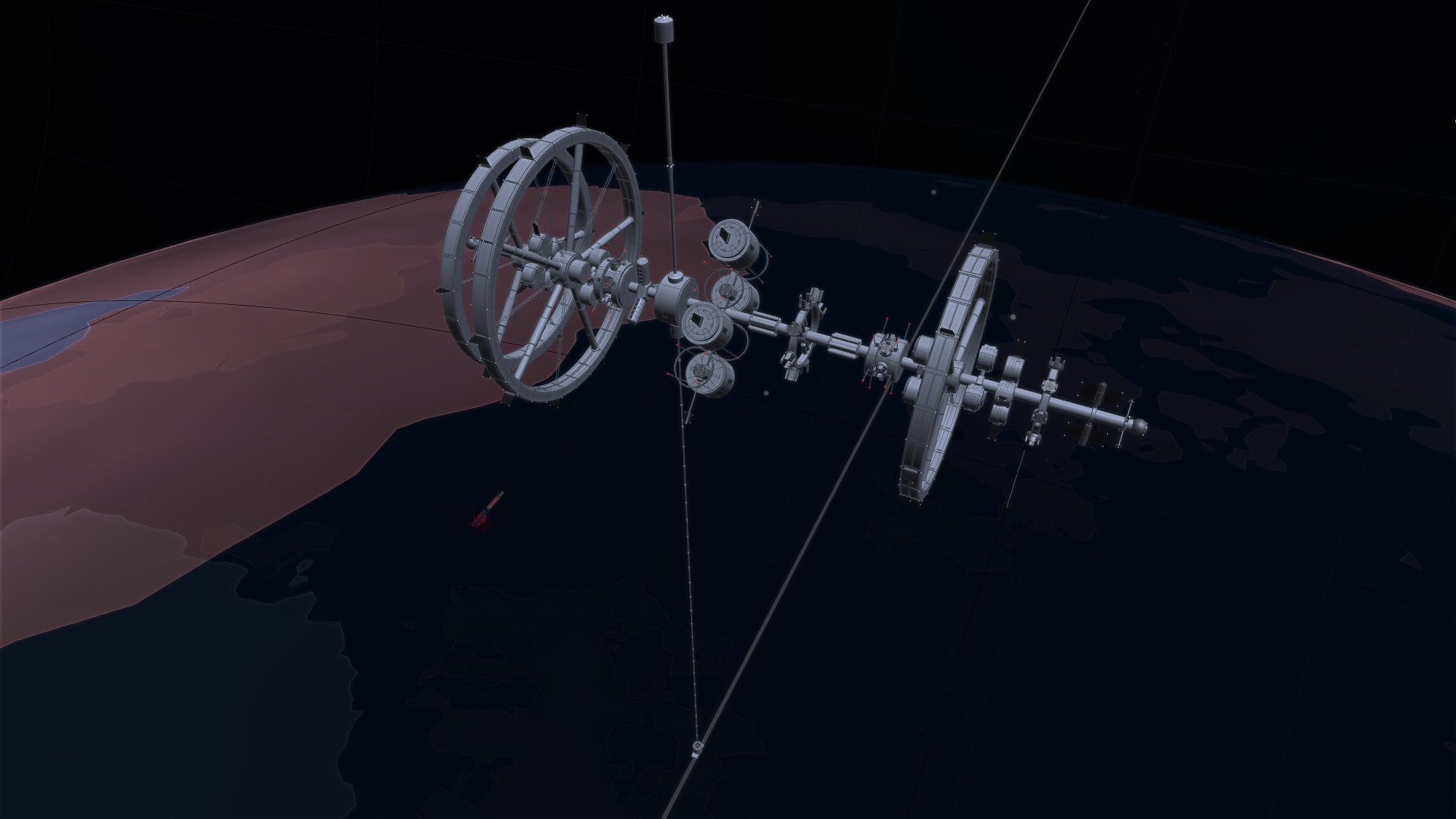
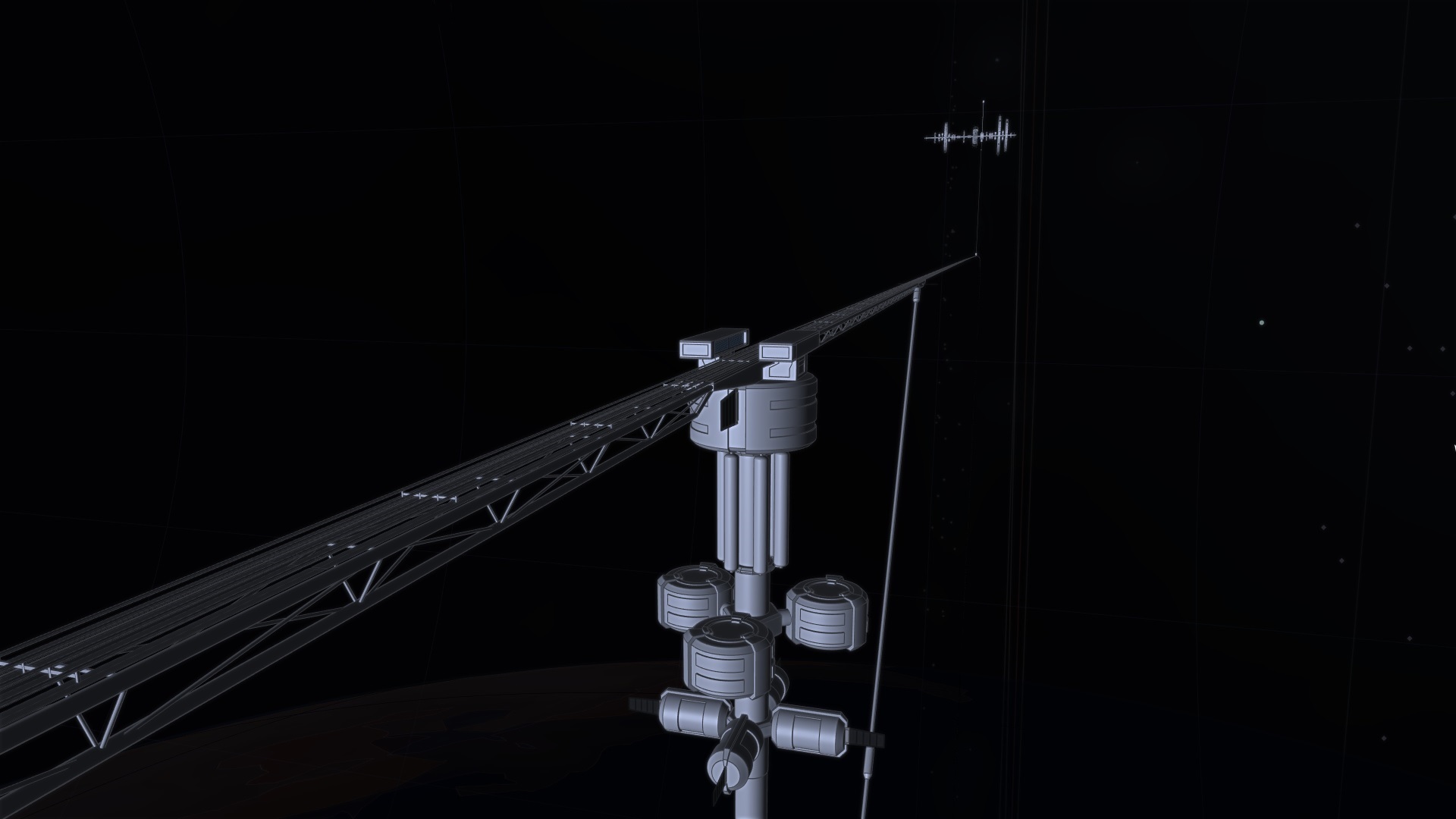

Multiple stations orbit a few kilometers above the ring. They are linked to the system through a short distance elevator leading to a port that glides magnetically along its dedicated tracks. A dynamically adjusted counterweight keeps the cable taut with minimum tension.
Space or orbital trains provide the actual connection between the ground and orbital domains similarly using magnetic levitation and propulsion. When stationary at the skyhooks they are submitted to a near-surface gravity. After accelerating to reach a station (typically 1-2 m/s²) weightlessness occurs when reaching orbital velocities. The trains’ design ensures an easy transfer of goods, materials and passengers both at the skyhooks’ (sides) and station’s (top) ports.
The video below presents an orbital ring system in motion.
Space traffic is obviously strictly monitored and regulated around orbital rings. All stations harbor space tugs to assist ships experiencing technical problems. Although not publicly acknowledged defense platforms on nearby higher orbits stand ready to manage potential threats from “non-cooperative” vessels or objects. The Space Guard also maintains a strong presence in the related Alliance systems.
Skycities feature sophisticated evacuation systems that can carry their inhabitants towards escape pods able to manage a safe reentry and landing. Accordingly the residents regularly undergo mandatory zero-G training sessions to teach them how to react should a catastrophic ring failure lead to a free fall.
As a matter of fact and despite the initial concerns no serious accidents have happened in the centuries of orbital rings’ existence.